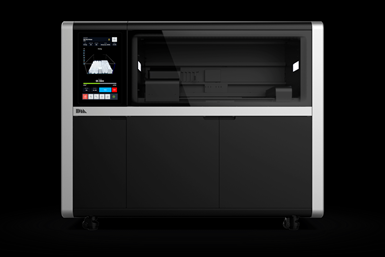Desktop Metal Launches Manufacturing for 316L Steel
Desktop Metal’s Shop System enables users to print end-use parts in 316L stainless steel with throughput, print quality and productivity unattainable via legacy additive manufacturing processes.
Share











Hwacheon Machinery America, Inc.
Featured Content
View More
Autodesk, Inc.
Featured Content
View MoreDesktop Metal, a mass producer of additive manufacturing (AM) solutions, has qualified the use of 316L stainless steel for the Shop System.
According to the company, the Shop System is the world’s first metal binder jetting system designed for machine shops; it enables users to print end-use parts in 316L stainless steel with throughput, print quality and productivity unattainable via legacy additive manufacturing processes.
316L is an austenitic stainless steel well-suited for demanding environments and applications, including marine, pharmaceutical or petrochemical processing, food preparation equipment, medical devices, surgical tooling and consumer products. Desktop Metal says 316L is known for its corrosion resistance, high ductility and mechanical properties at extreme temperatures. Example use cases for 316L include bulb nozzles for chemical processing, assembly closures for latching and holding medical device components in place and bezels for consumer wristwatches.
Desktop Metal’s Shop System reportedly includes all the binder jetting equipment that machine shops need – from printing through sintering – and is designed to scale throughput with a range of build volume configurations. In addition, Desktop Metal includes software for build preparation and sintering simulation, enabling businesses to quickly integrate binder jetting.
According to Desktop Metal, the Shop System produces end-use metal parts up to 10 times the speed of legacy additive manufacturing technologies and at a lower cost. The Shop System can reportedly attain speeds up to 800 cc/hour.
In addition, the Shop System can print dense, complex metal parts with incredibly fine feature detail and surface finishes as low as four-micron roughness average (Ra) out of the furnace. Leveraging an advanced single pass printhead, 1600 native DPI, the Shop System delivers 400 percent the resolution of legacy binder jetting systems.
Related Content
-
How to Meet Aerospace’s Material Challenges and More at IMTS
Succeeding in aerospace manufacturing requires high-performing processes paired with high-performance machine tools. IMTS can help you find both.
-
Push-Button DED System Aims for Machine Shop Workflow in Metal Additive Manufacturing
Meltio M600 metal 3D printer employs probing, quick-change workholding and wire material stock to permit production in coordination with CNC machines.
-
Designing a 3D Printed Part with Machining in Mind
Designing extra stock and mounting features into a 3D printed part can aid in machining processes downstream.

















.png;maxWidth=150)













.jpg;maxWidth=300;quality=90)

